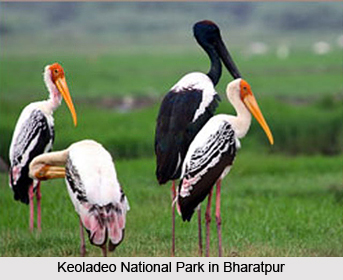 UNESCO declared Bharatpur Bird Sanctuary a world heritage site. As a result it is famous worldwide. The district of Bharatpur is also known as the Eastern Gateway to Rajasthan. Tourists who are planning a holiday in Bharatpur will find the tourist information on Bharatpur helpful. The history of this city is said to date back to the days of Mahabharata. It was part of the Matsya Desha. The most striking feature of Bharatpur was that in the land of the Rajputs it was one of those districts that was ruled by the Jats.
UNESCO declared Bharatpur Bird Sanctuary a world heritage site. As a result it is famous worldwide. The district of Bharatpur is also known as the Eastern Gateway to Rajasthan. Tourists who are planning a holiday in Bharatpur will find the tourist information on Bharatpur helpful. The history of this city is said to date back to the days of Mahabharata. It was part of the Matsya Desha. The most striking feature of Bharatpur was that in the land of the Rajputs it was one of those districts that was ruled by the Jats.
There are several places of interest in Bharatpur. Amongst the local attractions are the Keoladeo Ghana National Park, Lohagarh Fort, Government Museum and others. The national park is also popularly known as Bharatpur Bird Sanctuary. There are more than 300 species of birds here. Migratory birds are the main attraction.
A Rajasthani district can never be devoid of palaces and forts. Lohagarh Fort is one of the strongest forts in Rajasthan. The flamboyance of the other forts and palaces in Rajasthan are missing but the fact that the fort is impregnable makes it significant. The palace is the place where the museum is situated. Ancient artifacts are kept on display in this museum.
Bharatpur can be accessible from Agra. The nearest airport to this district is located here, at a distance of 54 kilometers. The district is well connected with Mathura, Sawai Madhopur and Kota. It is also connected to Agra by railways. From Delhi, Jaipur, Agra and Mathura one can reach Bharatpur via road. the best time to visit the district is from November to March. During these months several fairs and festivals are also held in Bharatpur.
It also advisable top carry bottles of water as far as the tourists are concerned. While entering temples one must remove his or her shoes. In India devotees are not allowed to enter shrines with shoes.



















